Build Your Own Fly Rod: DIY Video Series
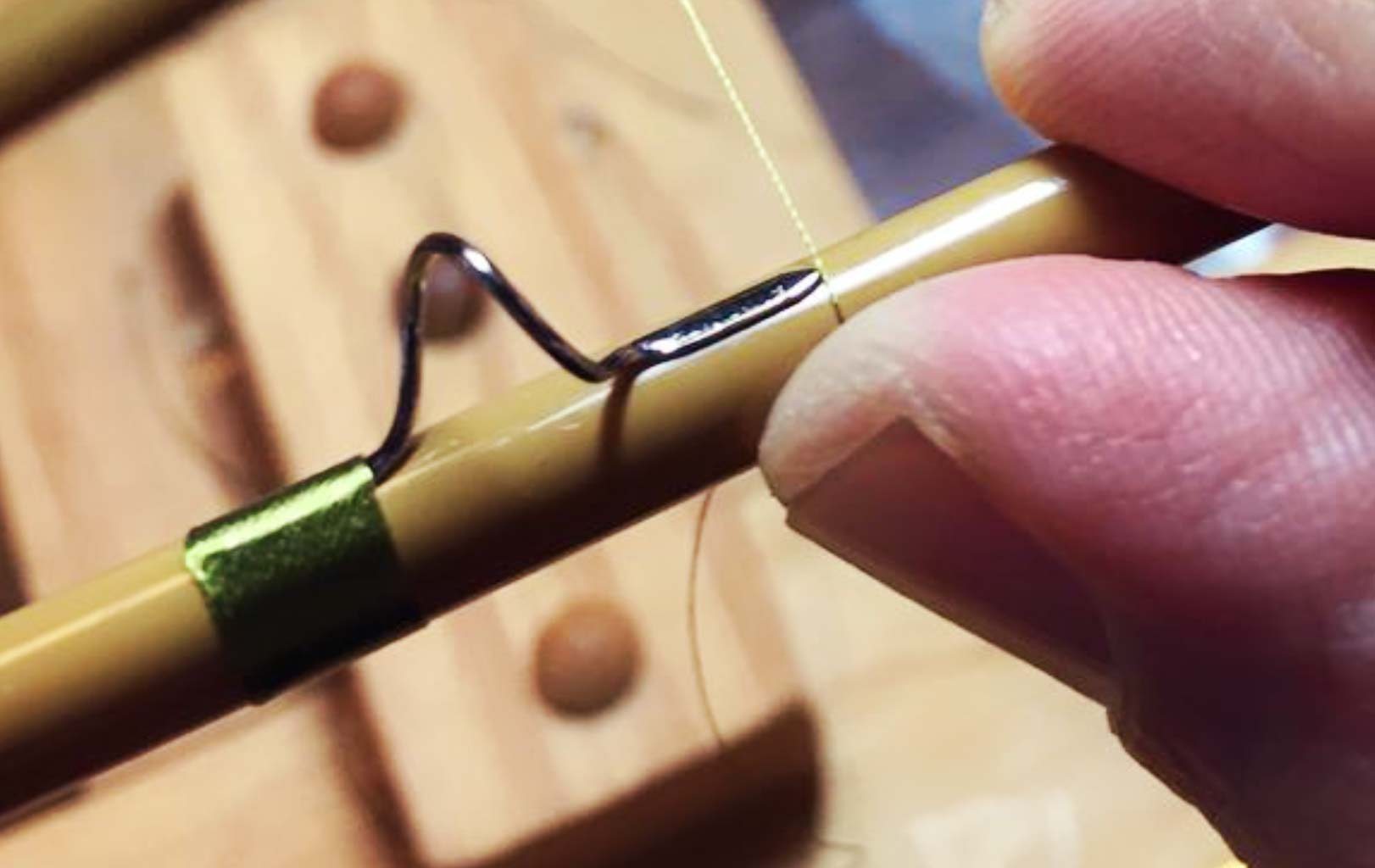
EVER THOUGHT ABOUT BUILDING YOUR ON FLY ROD? WITH THIS DIY VIDEO SERIES YOU CAN!
We are really excited to be working with Matt Draft, of Proof Fly Fishing, to bring you this great step-by-step tutorial on building a graphite fly rod.
Building a rod doesn’t have to be expensive or difficult. There are kits available that make it well within reach of most anglers and you probably have many of the tools you need around the house. With the right guidance and a little patience, you can do it.
There’s nothing quite as rewarding as fishing a fly rod you made yourself. Over the next seven weeks Matt will take you through the process step by step and help you up the learning curve to successful rod building. These videos will live on the G&G YouTube channel for your reference any time you need help.
As a special thank you to G&G readers, Matt will be offering free shipping on all of his kits for the next seven weeks. Just use the code G&Gfreeship on his web site.
Today we start with video #1, Rod Building Tools and Equipment. Matt will show you everything you need to build a fly rod at home and you’ll be surprised how much of it you already have.
Read More »Lighting The Way
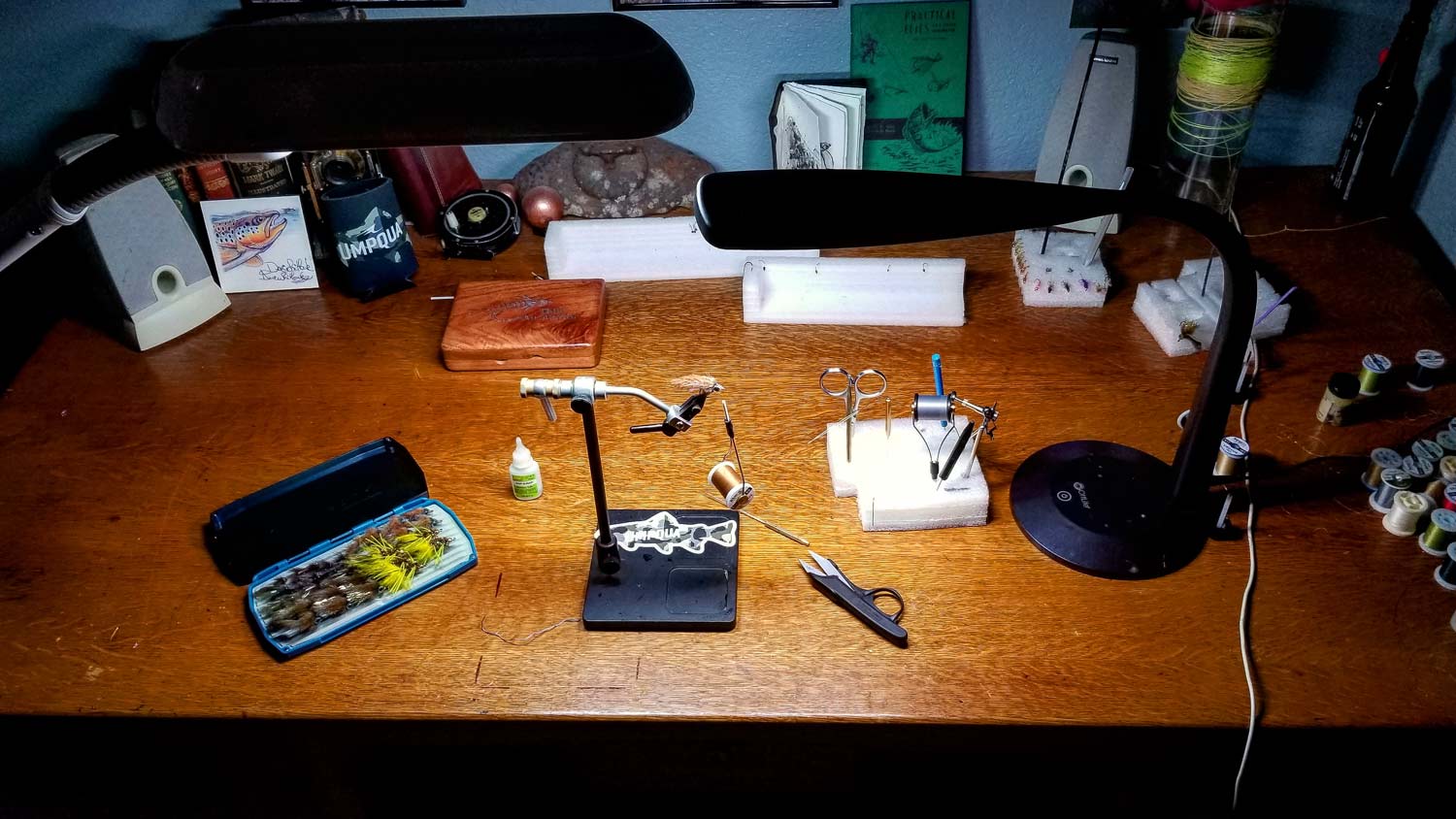
By Bob Reece
I leaned forward to check the UV coat that I had just applied to my finished fly.
The quick searing pain in my fore head reminded me that I had come too far. This was the last straw for me, the desk lamp that I had owned since college was on its way out. Along with its propensity to heat up, I had no idea how much my favorite lamp was adversely impacting the quality of my tying.
Having quality lighting at your fly tying station is essential for making the most of your time. Since my sentimental departure with my first tying light, I’ve embraced the use of natural spectrum lights. The two lights that I currently tie with are produced by the Ott Light company. The larger desk top model uses a bulb. Conversely the smaller and more portable model uses LED lighting. Both lights produce almost no heat.
More importantly than the reduction of heat is what these lights do for the eyes of tier. Fly tying is one of the most strenuous activities with regard to eye strain. Tying lights that produce light within the natural spectrum greatly reduce this stress. This helps to create a more positive tying experience and also allows for longer tying sessions.
In addition to a lack ocular discomfort, this genre of lights helps the tier to more accurately see the colors of the materials that they are using. That accuracy can
Read More »Omar
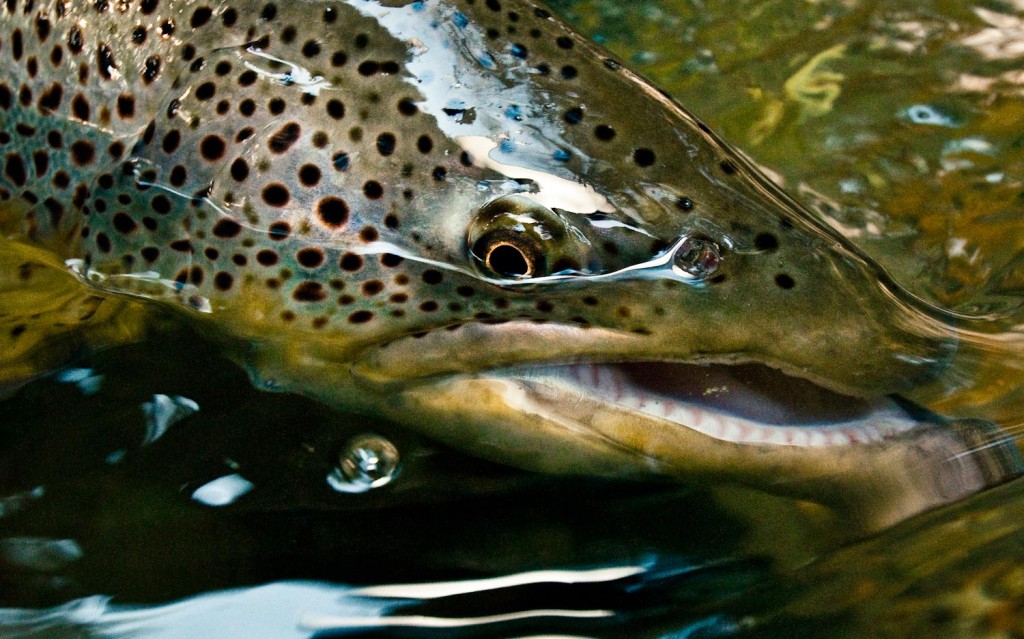
By Louis Cahill
“HE LEARNED, BECAME OLDER, WISER AND, YES, BIGGER. HE BECAME A BETTER FISH AND TO CATCH HIM I WOULD HAVE TO BECOME A BETTER MAN.”
Omar was a tough guy. Mean, if you got right down to it. A loner. Seldom seen, and when he was, there’d be a fight. Still, there were a great many things about Omar that you couldn’t help but find beautiful. The most remarkable being his smile. A mischievous maw, impish and wicked. A jaw like a big chrome bumper, gleaming with perfect white teeth. A rip saw for a mouth.
His physicality was striking. Taut as a bow string, his muscles refined and specialized like an Olympic athlete. He seemed misplaced in time. An evolutionary leap forward, or maybe back. His body like a blade carried by some ancient Samurai. Hardened, honed, perfect in every detail, unsheathed and set free of its master, to do as it will.
Like Ali in his youth, cocky and brash. The kind of confidence that you just knew would get him into trouble. Like Hemingway in old age, dark and brooding but still dangerous. The old man that might still issue you an ass beating if he didn’t like your looks. Omar asked for nothing. He took what he pleased and he demanded respect. He reminded me of my father, and maybe that’s why I loved him.
Omar was twenty-two when I first met him. It was in the fall and the trees were red and gold. The days were getting cold and the sun huddled close to the horizon. There had been a heavy rain and Fightingtown Creek was high with just a bit of olive color. The fishing had been slow and I was cold and tired.
The sun never really finds its way into that creek for long. Peering up through a gap in the rhododendron, bright slashes of amber in the tree tops told me the day was winding down. I cast a small streamer into a bend upstream and waited as the current swept it under a Buick size boulder at the head of a deep run. I stripped and my line came tight.
The name Fightingtown is a bit of a mystery. I’ve been told that there was an Native American village on the headwaters in a place now called the Big Frog Wilderness. The old people say that the Indians kept bull frogs and made them fight for sport. The white men called the village “Big Frog Fighting Town.”
I don’t know if any of that is true but it could be. The place is near the sight of Fort Gilmer where, in 1838, General Winfield Scott and his men, under the terms of the New Echota treaty, rounded up the last of the Cherokee Indians in Georgia and began the westward march we know as the Trail of Tears. It’s easy to believe that some of that native blood was spilled into the water of Fightingtown. At any rate, the name suits it.
Everything about Fightingtown creek is inhospitable. It’s a thicket, a briar patch, the home of Brer Rabbit. In the days, when I met Omar, it ran high and hard over slick rocks with sharp edges. I seldom left there without water in my waders, and often I was bleeding. My face scratched from pushing through mountain laurel, spider webs clinging to my ears.
It winds like a labyrinth through hills as craggy and scarred as the faces that glare over shotgun barrels in its headwaters, places like Hells Holler and Devils Den. It flows past forgotten cemeteries and auto graveyards, past crumbling abandoned home places and hemlocks as old as the sky. It turns back on itself so often you start to think it runs up hill. It is the lost soul of Appalachia. It is my home water.
“Those Fightingtown fish are bullies,” my buddy Dan always said. I’d struggle and suffer down there, bent double at the waist with a branch poking in my ear, trying to cast. Plenty of days I’d go home dirty and sore without a tug on the line to show for it. When I hooked a fish landing it in that thicket was like boxing a bear in a closet. They are a riddle, those fish. They break every rule and in learning to catch them you become as unconventional as the place itself. When you do learn how they think and your are willing to fight them like they must be fought, even if it means a broken rod or a bleeding shin, then you will discover Fightingtown’s secret: Leviathan.
Landing Omar the first time was mostly
Read More »Small Stream Recon Part I
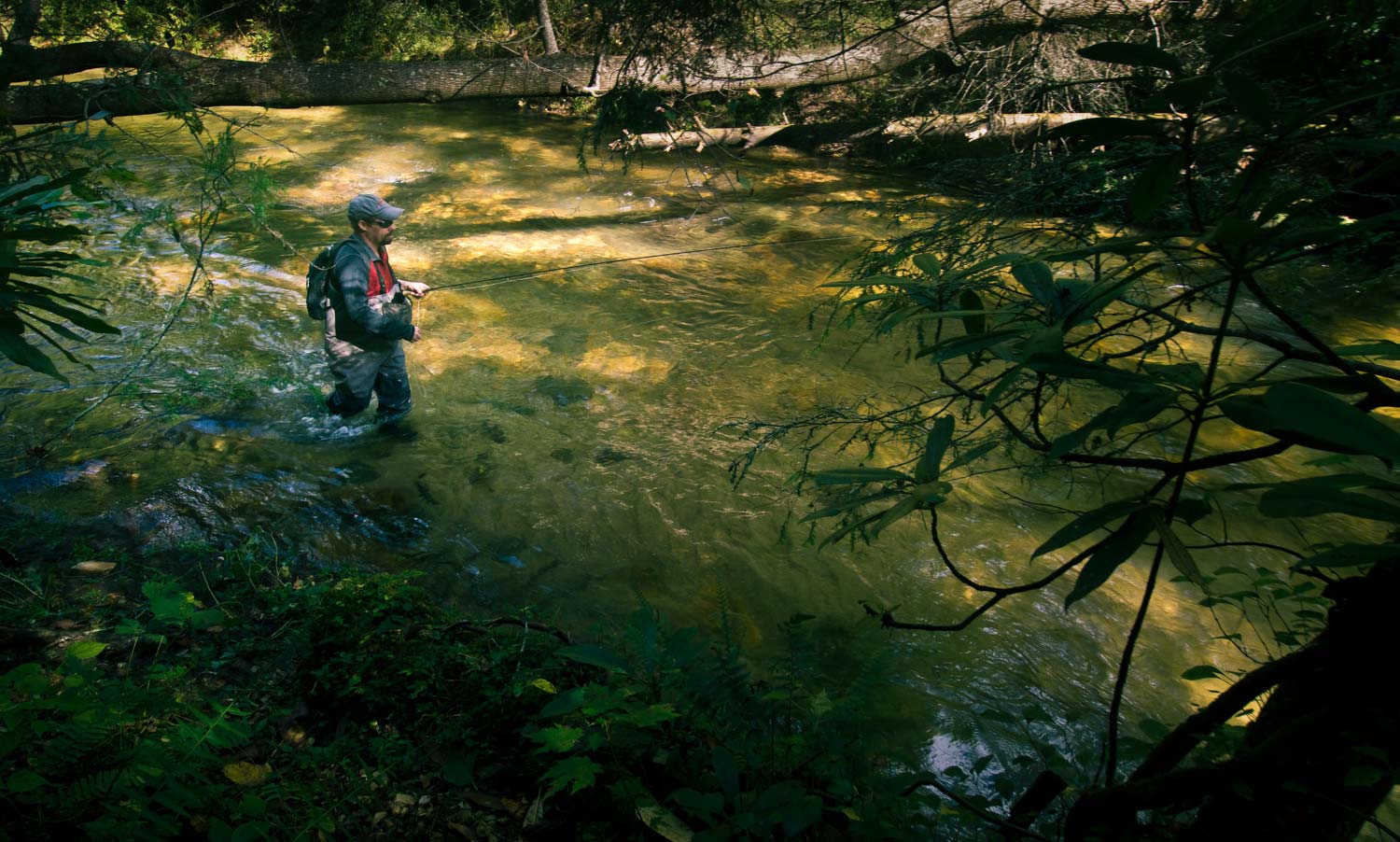
By Jason Tucker
Small streams have always held a special place in my heart.
For one thing, where I lived in the tip Northern Michigan, all we had was small streams, and lots of them. I cut my teeth on small streams. It was a long drive for me to fish bigger rivers like the Au Sable or Manistee, but small streams and creeks were always minutes away. Another reason I loved small streams was the solitude. When I fished even the main trunks of our small streams I often bumped into other anglers, or found bait fisherman camped out on holes. If I went into the headwaters or up the tributaries I found no one. What I also often found was better fishing- more fish and less educated. I often found even big fish feeding in the open in the middle of the day.
Once I started my blog, Fontinalis Rising, I got to know a lot of anglers from down state who often asked me where to go or how I knew about these spots. I began to realize the value of being a local. By living in the same area for thirty years I had amassed quite a catalog of small streams and access points that weren’t apparent to the casual observer. I had spent most of those years hunting, fishing, foraging, and exchanging surreptitious tips with other locals. I didn’t realize how hard it was for someone from outside the area to find any decent water at all to fish. In later years I would have these same frustrations in my own travels to Canada and even Michigan’s Upper Peninsula. But over the years I developed a series of strategies for finding new and excellent water to fish, sight unseen, and having success. Here goes.
State Fisheries Agencies Maps and Websites
Before the internet became practical to use from home, much less from your phone, Michigan’s DNR published a trout fishing guide for the entire state that included color coded maps of all the known trout waters in the state. I found a lot of fishing spots using this. The default color for general regulation streams was green, and often it was the headwaters and small tributaries that were etched out in green. I spent some time on special regulation sections, but it seemed that every time I fished the “green” streams, I caught more fish, saw fewer people, and had more fun.
This map and guide is no longer in print because it is available on the internet. I still have a print copy from fifteen years ago which is very useful when I’m in the many areas of the state that still lack cell service. Georgia has a print map that outlines all the trout streams in the state.
With the advent of advanced mapping applications on the internet and cellphones there are even more powerful tools available.
Read More »The Homemade Yeti Cooler
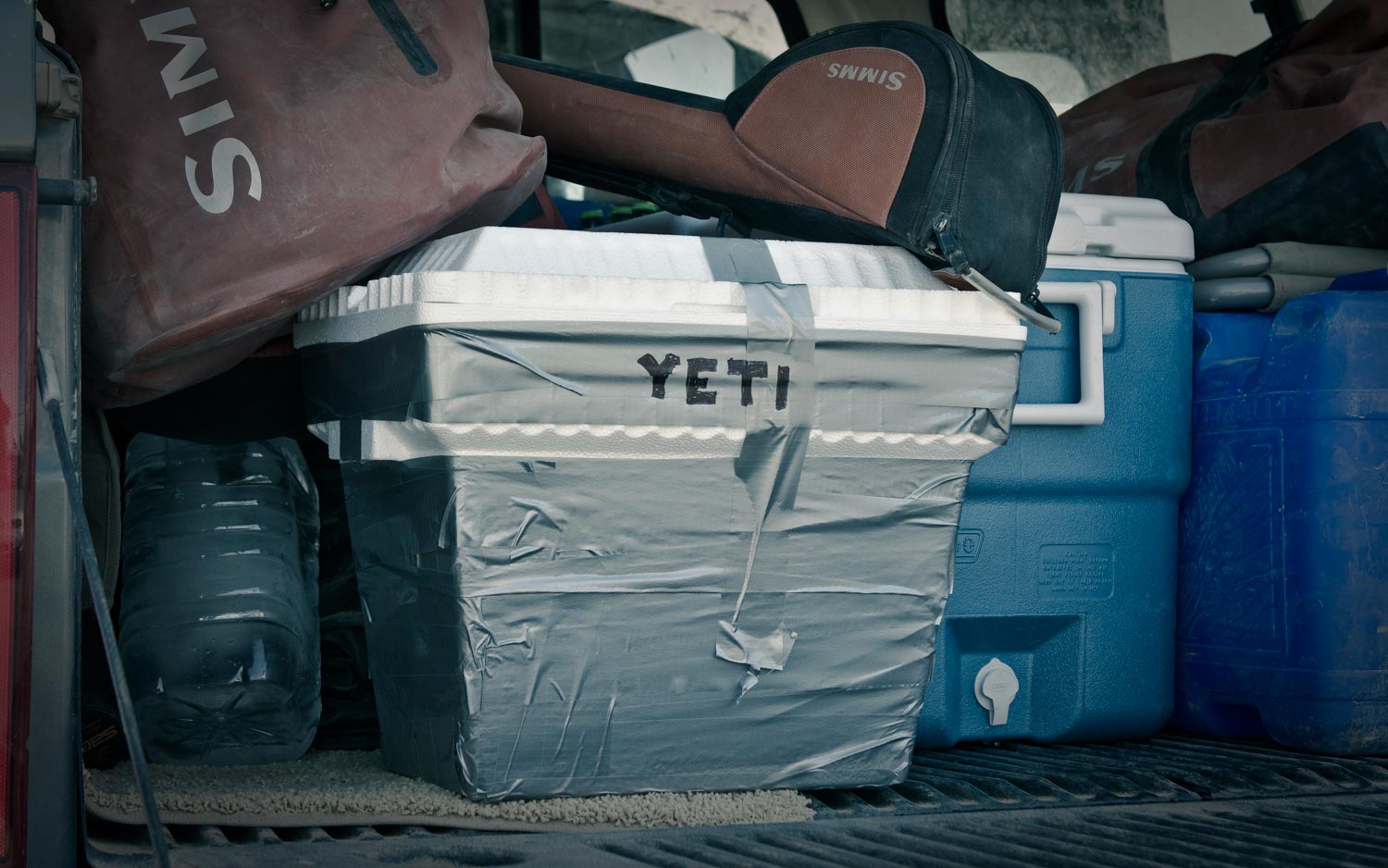
Don’t get me wrong, your Yeti is a great cooler and, yes, you can use it for a poling platform, sort of, and it does make you look very cool but if you’re like me and you travel a lot to fish it’s just not practical.
What I need is a cheap cooler that I can use for a week or two, then toss in the garbage on the way to the airport. I suffer a little guilt for landfilling a bunch of styrofoam, but the damage to my wallet is minimal.
I’ve used styrofoam coolers from grocery stores for years. On photo shoots I will sometimes have a half dozen of them. The problem is, they don’t hold up. You can buy cheap plastic ones but they are still twenty bucks or so and they’re not as good as the styrofoam at keeping ice. If you pitch six of them, you’re tossing $120. My frugal soul can’t stand that.
Five or six years ago I figured out this cool trick for making your styrofoam cooler bomber. A couple of layers of strategically placed duct tape on the sides, top and bottom make them surprisingly tough. Adding duct tape hinges and a lid helps to keep your ice longer by keeping the lid shut tight.
I’ve been doing this for years and I have
Read More »Grass Roots Fly Fishing – People Making A Difference
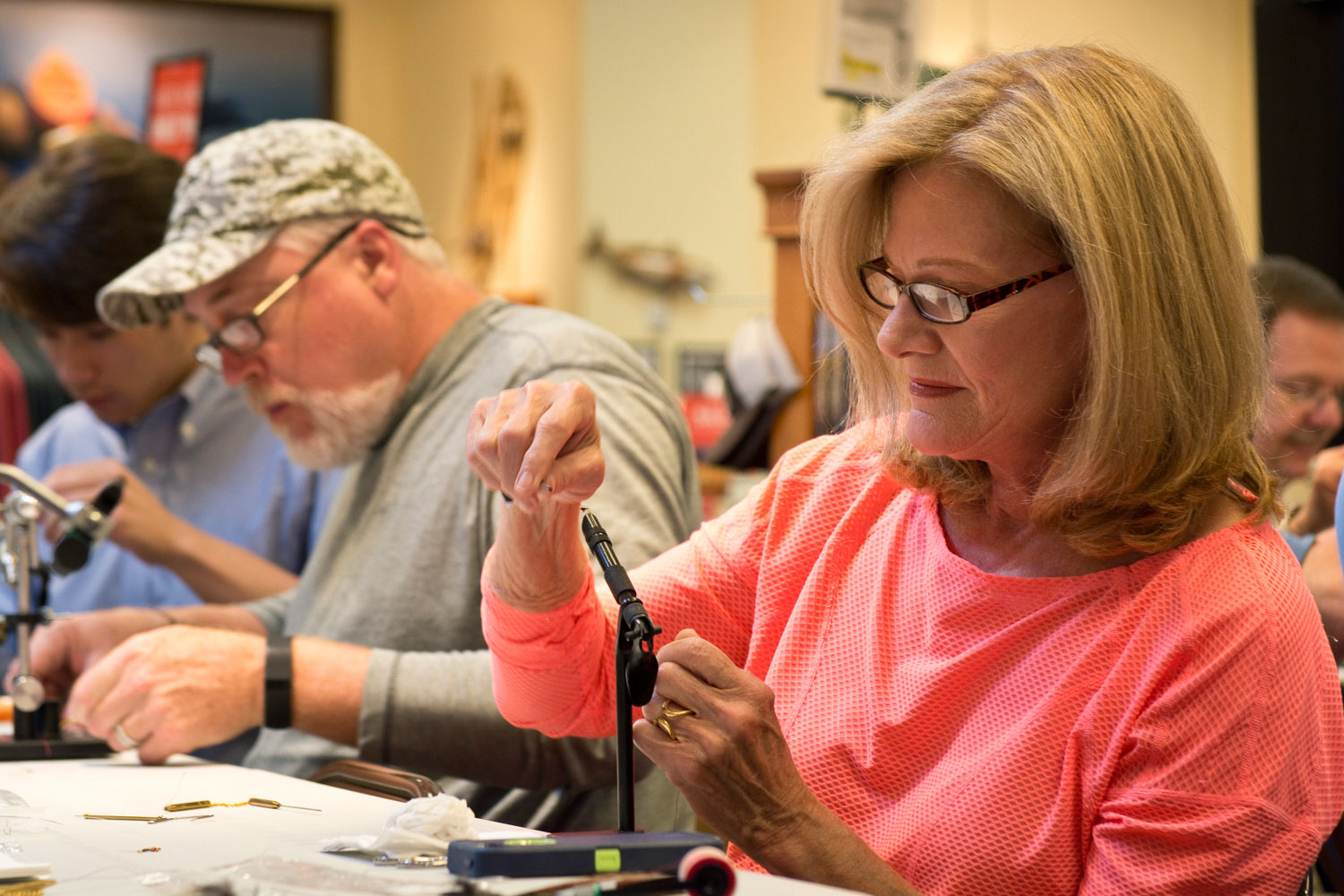
by Louis Cahill
Is it time you gave something back?
You can’t go to school for fly fishing. You can take some classes or workshops, here and there, but most folks learn to fly fish one of two ways. On their own or from a friend or family member. Either way it’s a tough learning curve. Information is pieced together from tips and suggestions, successes and failures. Some anglers hire guides or casting instructors to teach them but that’s not an option for everyone. What if there was a better way?
Well, there is. There are local clubs and groups that take on the mission of educating anglers and creating a community around our love of the sport. Some are better than others and some are great. At their best, these groups do more than share information. They share the passion, the ethics and the camaraderie of fly fishing. I’m going to tell you about one of them.
I didn’t know my life was about to change when I met Scott MacKenzie. We fished together, and hit it off right away but I had no idea what a positive influence he would be, for me and others. Scott is just one of those guys who radiates positive energy. He came along at a time when things were pretty tough at G&G world headquarters. It is not an exaggeration to say there would be no Gink and Gasoline today, if not for Scott.
He and I fished together in the Bahamas, on one of my bonefish schools. Scott had been a fly fisherman for many years but had never tied flies. I taught him to tie a bonefish fly and when he caught fish on it the next day, he was hooked. From that point forward he was all about fly tying. I’d get a couple of text messages a day with questions or photos of flies. Soon he asked me, “Would you teach me to tie?”
“Of course!” I answered.
“While you’re at it, would you mind teaching six or eight other guys?” He followed up.
I agreed and Atlanta Fly Tying was born. Scott threw down his own money and bought eight complete tying setups. Eight Regal Revolution vises, eight sets of Rising tying tools, thread and materials all in lots of eight and scheduled the first class. We met at Scott’s office. He reached out to The Atlanta Fly Fishing Club, another great organization, and they spread the word that there would be free tying classes, open to anyone.
That first night we had about six guys show up. We sat around Scott’s conference table to tie redfish flies, because Scott and I were going redfishing in a couple of weeks. I dove right in to the instruction. We were cranking along when Scott brought up G&G.
“Here comes the pitch!” One of the guys blurted out.
I was floored. “I’m sorry man,” I told him, “I don’t have a pitch. I just run a fly fishing web site, and it’s free.”
It never occurred to me that these guys were sitting around that table thinking we had something to sell them. I should have realized. That is the kind of world we live in, where any act of generosity, no matter how small, is suspect. Maybe I’m stupid for not having something to sell them. If I had a fly shop or a guide service, maybe I would, but all Scott and I had to offer was knowledge and enthusiasm. Those guys wound up
Read More »11 Tips for Spotting Tarpon
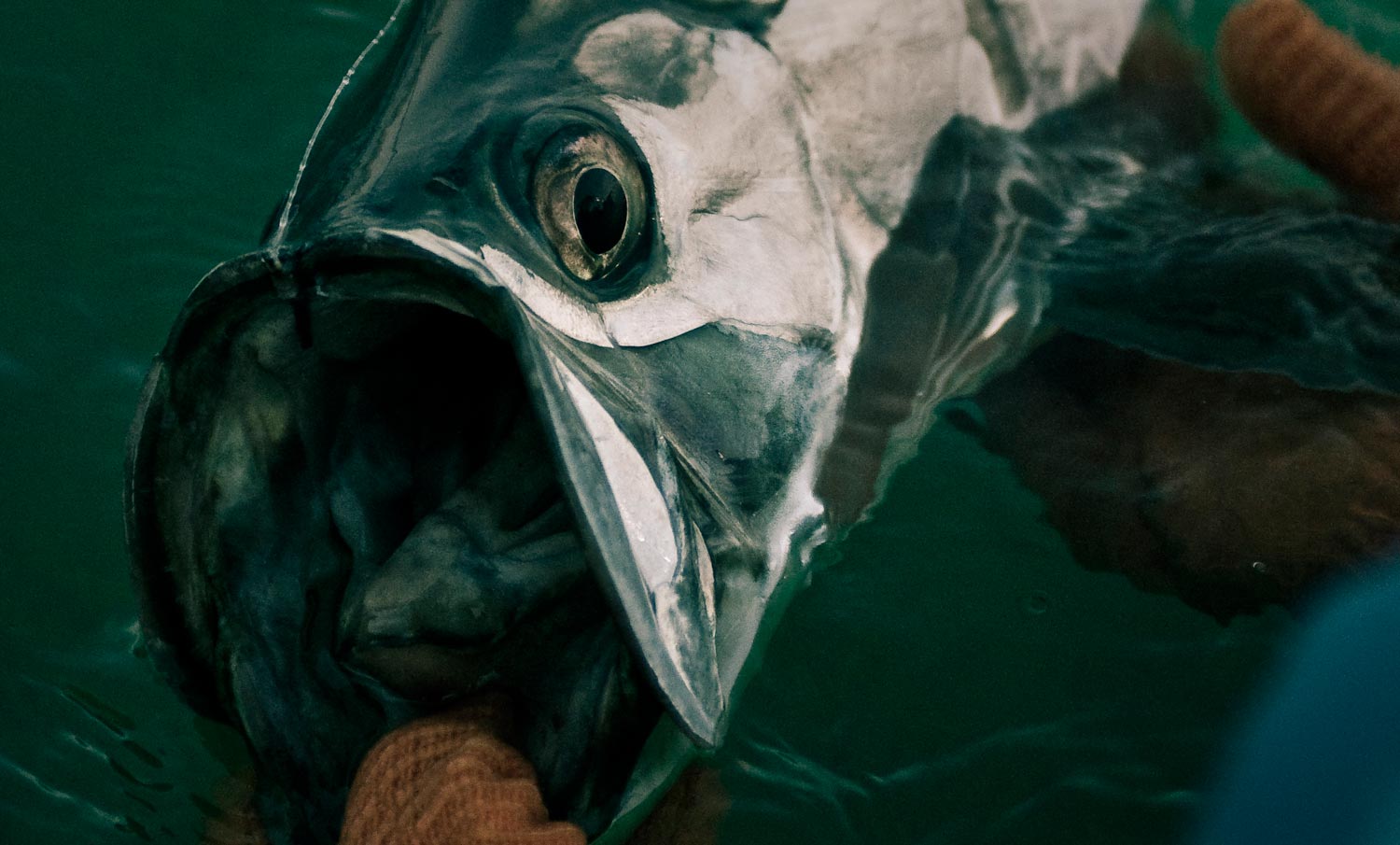
HOW DOES A SIX FOOT LONG FISH VANISH?
It’s hard to imagine, but they do. Even big schools of tarpon can sneak up on you with surprising regularity. Tarpon fishing is a game of strategy and the earlier you see the fish, the better your chances of success. Having the time to set up a good angle and make a plan are key. It’s also important to read the fish’s attitude and in the best case see the eat. Good eyes are as important as the right fly.
Like any flats fishing, good polarized glasses are a must and your guide will be a valuable resource. Even with the help of a guide, knowing what to look for and what it means when you see it will make the difference between frustration and elation. Here are some tips to help you succeed.
Know what to expect
Tarpon shots come in a variety of favors. Tarpon can be laid up, sitting still alone or in pairs. They can be in schools, from three or four fish to three or four hundred. Those schools can be milling around on a flat or on the move. They can move as a big group or a single file procession. These processions sometimes swim in a perfect circle called a daisy chain. Knowing what each of these options looks like will help you quickly identify the fish’s behavior and plan your presentation.
Scan the water
It’s easy to get tunnel vision when you’re on the bow of a flats boat. Fixating on a suspicious shadow or looking where you expect to see fish can blind you to approaching fish. Keep your head on a swivel and scan the water from side to side and near to far. Spend a little extra time studying water where visibility is poor. Fish can literally come from anywhere so don’t get caught staring a hole in the water.
Motion
The easiest fish to see are the ones on the move. The human eye picks up motion quickly and if you are scanning properly you will pick up moving fish from a good distance. Just be aware that you could be looking for a single fish, a line of fish or a big school. A school of several hundred tarpon looks like the shadow of a cloud moving on the water. Make sure you know which direction the clouds are moving.
Color
Like bonefish, tarpon have highly reflective sides which offer nearly perfect camouflage. What gives them away is
Beyond The Flies: Making The Most Out Of Your Winter Fishing
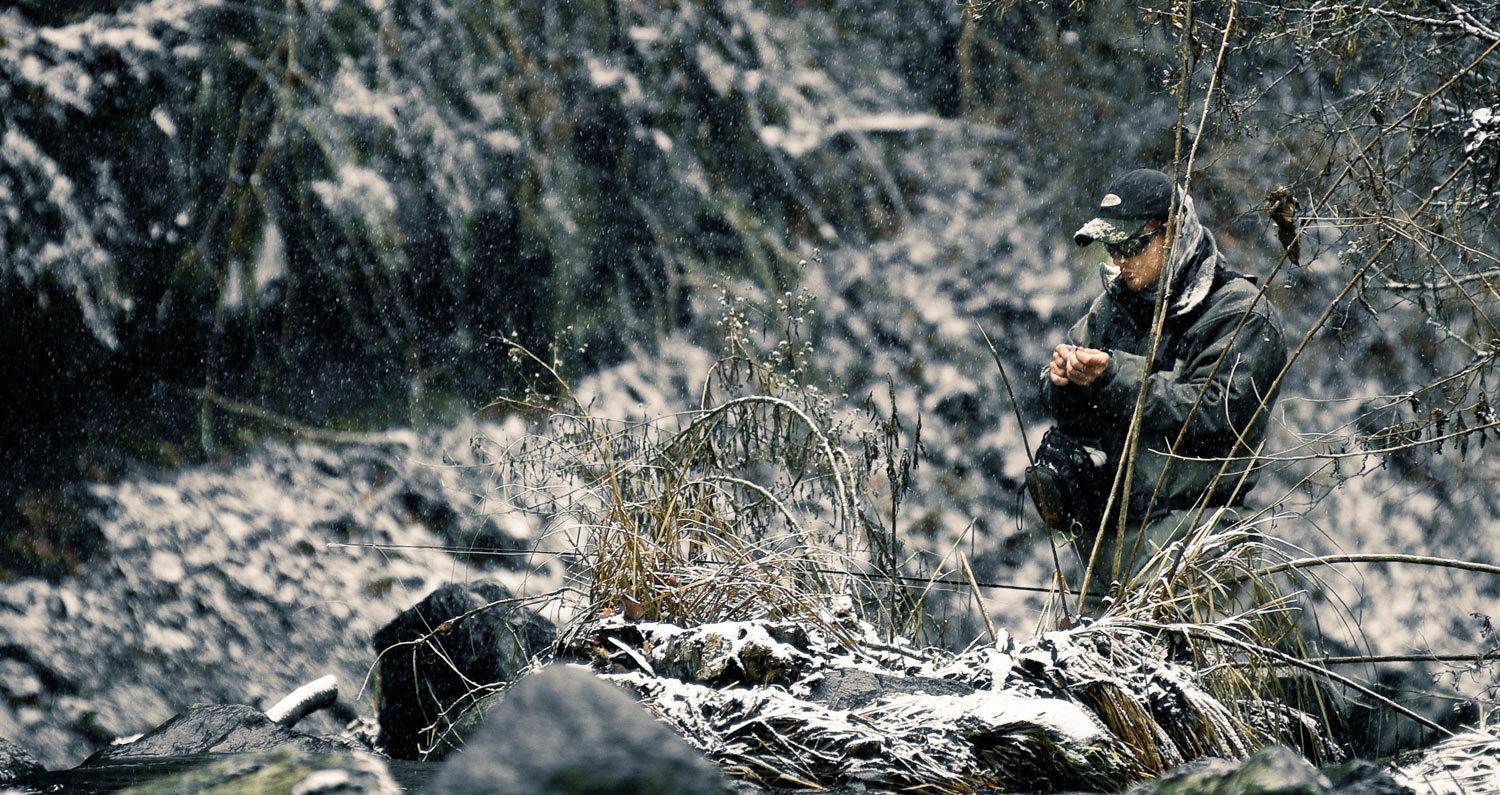
By Kyle Wilkinson
Being prepared for a day of winter fishing means more than having a box of the right flies.
I got an email earlier today from a customer who had just gotten back from the river. He had attempted to fish the South Platte however, after several hours of trying to cast between floating icebergs and slush, he decided to wave the white flag and head home. His question was to know how to predict these sort of conditions ahead of time- before making the hour plus drive to find an unfishable river.
The South Platte, like virtually every other tailwater around the country, is well known to be a year-round fishery. With that said, there are still a few other factors that need to be considered when planning a winter outing. Following these 5 steps are just as important as your fly selection if having a comfortable and successful day on the water during winter is your goal.
Nighttime Temperatures. Everyone loves to pay attention to the daytime temps you’re likely (or more like keeping the fingers crossed) to experience during your day of winter fishing. A sunny, 40 degree day during January can feel like a heat wave, particularly if you’re coming off a nasty cold stretch leading up to it. And while pleasant daytime temps are something no one will complain about, the nighttime temperatures in the days leading up to your trip are just as important to pay attention to. Given the fact that it’s winter, fishing a tailwater is always going to be your best bet. If you see nighttime temps are hovering around freezing, plan on seeing the majority of the river open. On the other hand, if your day on the water is immediately following a especially cold stretch- i.e. single digits (or lower) at night, followed by sub 32 degree days, then plan on the situation mentioned in the first paragraph to be what you encounter. Thankfully, given the wonderful nature of tailwaters, the remedy to avoid fishing in a “Slushy” is to just plan on fishing closer to the dam. The water should remain warm enough–particularly within the first mile below the outlets– to remain relatively ice free compared to the lower stretches.
Layer Properly. I know this seems like common sense, but it’s something I see a lot of people do wrong.
Read More »15 Tips For Effective Fly-Fishing From A Drift Boat
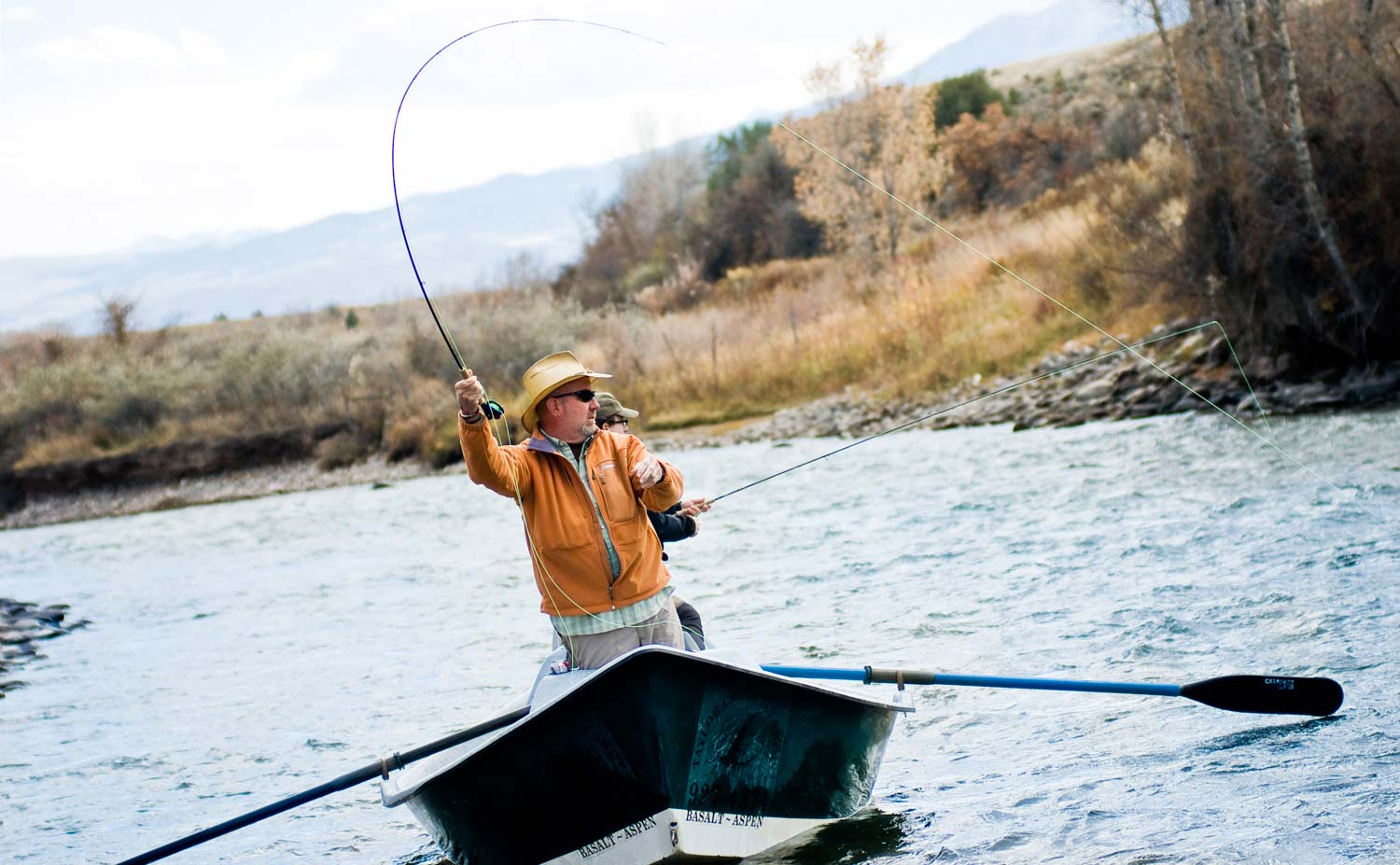
It’s easy to become spoiled to fly-fishing from a drift boat.
A good drift boat is a perfect fly fishing machine. It offers anglers a tactical advantage over the fish in just about every situation. I’ve owned a drift boat for some time. Every time I hook my Adipose up behind the truck, I get a warm feeling. I might love that boat too much.
Still, I remember when all of my trout fishing was done on foot and I remember how alien the drift boat felt the first time I stepped aboard. I see it even now, when I invite new anglers out on the boat. I figured it was past time for me to do something about it.
HERE’S MY 15 TIPS FOR MORE EFFECTIVE FLY-FISHING FROM A DRIFT BOAT.
Know your right from left
If you are not familiar with the terms, river-right and river-left, you may struggle with your guide’s instruction. River right and left are always oriented from the perspective of looking downstream. If you are looking downstream, river-right is to your right. If you are looking upstream, river-right is on your left.
Don’t cast over the boat
This seems obvious but I see anglers struggle with it all the time. There are times when you just have to adapt your casting to boat position and conditions. If you’re a right hand caster fishing from the front of the boat, to river right, you are going to have to make some accommodations. I prefer to present my fly with a back cast in this situation but there are other options, like a comb cast.
Whatever you do, resist the urge to cast over the boat. You will inevitably end up hooking someone. You might pull it off for a couple of casts, but soon you’ll get lazy or throw a bad loop or catch a gust of wind and there will be blood. Practice your back cast presentation. It will pay off.
Your water is downstream
Probably the most common mistake I see is anglers fishing
Read More »What The Hell Is That?
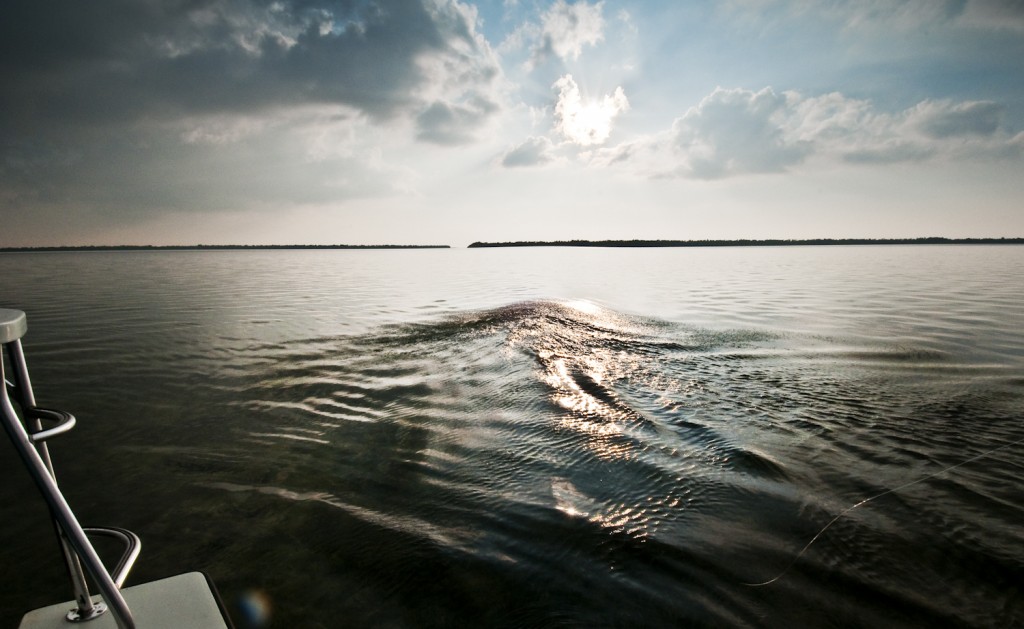
Every once in a while you see something you just can’t explain. I was shooting in the Florida Keys the other day with with my friend Capt. Joel Dickey. It was late in the day. The sun was hanging right on the horizon and I was making the best of the evening light. I was out of the boat, standing in wast deep water shooting Sandy Horn casting from the bow and Joel on the platform when Joel called out “we got a school of perms coming, big school”. I stayed still and quiet, excited about the chance to shoot a hookup from out of the boat. I could see the push about a hundred and fifty yards out. Joel wasn’t kidding about it being a big school. The push looked like the wake of a flats boat.
Our setup couldn’t have been better. The push was headed straight for us and fast. I could see Joel squinting into the glare. At a hundred yards he said, “no, it’s not permit”. A minute later, in a very different tone of voice he said,”oh my God that’s a f¥€king huge shark”. Now, I have heard these words before and I have seen sharks in the Keys bigger than a flats boat. You don’t have to say f¥€king huge shark to me twice. I made a little wake of my own getting back to the boat.
By this time the push was fifty yards away and closing fast. You could see the water parting off the dorsal fin. I thought about saying, “we’re gonna need a bigger boat”. Before I could it dawned on all of us that we should be able to see a fish that big by now, but we couldn’t. We could just see the push.
Read More »